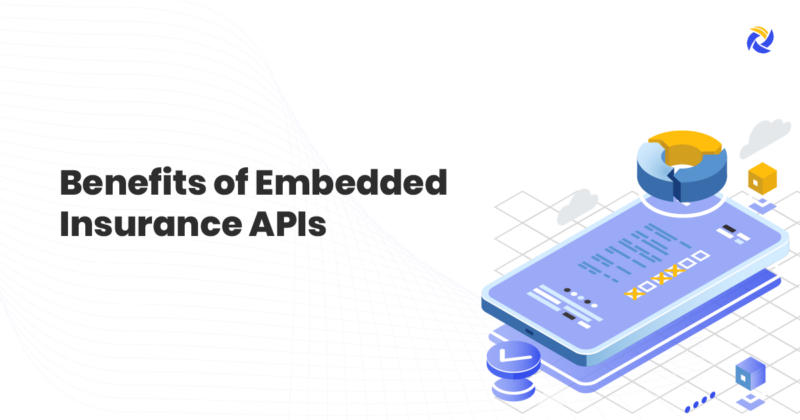In most African markets, insurance penetration is below the two per cent mark. Unlocking the continent’s full potential and protecting Africans from financial loss can be fast-tracked through insurance by adopting an embedded insurance strategy.
Looking at trends in the fintech space and how financial inclusion for the unbanked has become a more attainable goal aided by technology. We might conclude that it is time for Africa’s insurance sector to go to the moon and surpass its present valuation of $68 billion in total Gross Written Premium (GWP). So, what is Embedded Insurance?
What is Embedded Insurance
Also known as embed insurance, Embedded Insurance is the real-time bundling of insurance coverage or protection for consumers within the purchase experience of an existing product or service. For example, Maria visits an e-commerce platform to purchase a new phone. Her old phone was stolen; when checking out the new device, she would buy insurance coverage to protect herself from theft or damage as specified by the cover she opts in.
Princewill, a young professional travelling for a work conference, while checking out to pay for his travel ticket online, Princewill opts in to purchase a bundled travel insurance protection for his trip. Seamless, you must agree. The mere fact is that with Embedded Insurance, the customer experience is as easy as the examples you just read above.
Global Insurance market projections state that “Embedded Insurance has a trillion-dollar market potential for insurers globally”. It will help traditional insurance businesses in Africa to see an increased uptake of their covers, solidify their portfolio, and help non-insurance businesses grow new income streams by selling insurance as a feature while improving customer trust and retention. Everyone wins.
Types of Embedded Insurance
There are three types of use cases that can be adopted for offering Embedded Insurance in Africa: bundled, standalone, and purchase flow embedded insurance.
Bundled: Consumers purchase this type of insurance cover bundled alongside a service or product. An example is renters insurance bundled into a monthly or annual rental payment. Another example will be car financing payments bundled with the auto insurance policy.
Standalone: Car dealers, mechanics, marketplaces and eCommerce businesses can offer all types of insurance coverage. Some health insurance covers are available through affiliate partnerships.
Purchase-Flow: Insurance policy cover is an add-on to a consumer’s purchase flow. A consumer purchasing an electronic device can purchase a gadget insurance cover for damage, an e-commerce, marketplace or logistics business can embed goods-in-transit insurance covers.
Octamile Announces Partnership with DriveMe.Ng – Protection for Fleet Owners, Drivers and Other Vehicle Owners
Benefits of Embedded Insurance for Insurers
Business Growth: Embedded insurance offers excellent business growth prospects for incumbents and challengers in the insurance sector. Such business growth opportunities include driving and increasing their revenue stream, improving customer acquisition, and lowering operational expenses.
Data-driven Decision Making: With the rise of Artificial Intelligence and Machine Learning in insurance, Embedded Insurance will be more equipped with insights from multiple touchpoints of their digital customers. Such information can inform critical business decisions on risk modelling, developing prediction-based insurance products to meet specific customer needs, and improving the customer experience for non-insurance businesses.
Seamless Customer Experience: Do you remember the Maria or Princewill example from earlier? According to several reports, Africa’s young population under 35 make up about 47.4% of the continent’s total population. Most of them are primarily Millennials and Gen Zs who access financial services, e-commerce, ride-hailing and sharing via a smartphone.
Embedded Insurance opens up a whole new world of possibilities for traditional insurers to seamlessly onboard Millenials and Gen Z on the continent into their portfolio. It helps non-insurance businesses offer insurance as an add-on to their existing to improve retention rates.
Reduced Administrative Costs: According to an Infosys study, the adoption of digital initiatives like Embedded Insurance can help Life, Health, and Property and Casualty Insurers to save 10 -25 per cent of their annual sales and operations costs.
An insurer’s key processes like claims and payments are automated for improved customer experience; elements of old costs for insurers are either outsourced or shared through partnerships with non-insurance businesses.
Easier Distribution: From our example earlier, Princewill would have to walk into an Insurance company to fill out several forms after purchasing his ticket to access travel coverage. With embedded insurance solutions, the distribution of insurance coverage becomes a more accessible and more multi-channel approach.
Insurance and non-insurance businesses can seamlessly launch and distribute insurance products targeted at Princewill across multiple touchpoints.
Cross-Sector Partnerships: It is essential to note that Africa’s challenges are unique but homegrown solutions can achieve the future we want. Although we have shown tremendous growth in the past decade, only cross-sector partnerships and leapfrogging strategies can sustain growth. Every stakeholder, incumbent or challenger brand alone cannot solve Africa’s unique insurance challenges alone.
Hence, Embedded Insurance creates a unique opportunity for insurers and non-insurance players to achieve the vital goal of securing the future of Africa. Such partnerships will be between traditional governments, insurance businesses, insurtech startups in Africa and non-insurance businesses that can offer insurance products as a feature.
We have spoken extensively about how embedded insurance impacts African insurers and non-insurance businesses; let us look at the African consumers who ultimately will benefit the most and is the most critical piece of this puzzle.
Benefits of Embedded Insurance for B2C Businesses
1. New Revenue Stream: Embedded Insurance enables B2C businesses to unlock new revenue streams. Your company earns a commission when a consumer opts for an insurance cover as a standalone product or as an added feature.
2. Increase Customer Trust: Embedding the safety net insurance covers provide can help B2C businesses increase the trust customers have in their value proposition.
3. Differentiate Your Value Offering: Embedded Insurance APIs can provide market differentiation for your value offering across your competitors and help customers trust you more.
4. Increase Customer Retention: Marketing your business value proposition with embedded insurance as an add-on can help B2C businesses to reduce customer churn and increase their lifetime value.
6. Offer Tailored Insurance Products: Insurance covers featured in your ecosystem or the customer journey will only be context-relevant covers suited for your business and customers’ needs.
7. Easy to Integrate: They are easy to integrate and set up in minutes.
Benefits of Embedded Insurance Consumers
- Easy Access to Protection: Embedded insurance provides African consumers more accessible access to insurance coverage and protection from financial loss.
- Personalised Experience: Traditional insurance sales cannot truly tailor a personalised experience for African consumers in its real sense. Selling the coverage to Africans like Maria and Princewill when they need it and what they need would help increase their uptake of insurance products.
- Tailored Premiums: The available data and machine learning technology will ensure premiums are designed according to the individual risk factor. Hence their insurance premiums are more suited for their profile.
- Quick Access to Claims: African consumers via embedded insurance will have immediate access to filing claims and receiving them. This would help solidify the belief in insurance for a whole new generation of insured Africans who will come to experience that claims are accessible when needed.
In conclusion, digital consumer behaviours in Africa support the paradigm shift needed to change how insurance policies are bought here rapidly. Don’t be left behind, be an early adopter. Schedule a meeting or email us at business@octamile.com to experience new Embedded Insurance possibilities for your business today.







